10 University of Bradford research and innovation projects that will change the world
The University of Bradford’s Research and Innovation Annual Report 2023/24 highlights areas of research that have the potential to change all our lives, from cancer therapeutics to biodegradable plastics.

The Higher Education Funding Council for England says 77% of the University’s research impact is Internationally Excellent or World Leading (3* or 4*).
Professor Sherif El-Khamisy, Pro-Vice-Chancellor for Research & Innovation, said: “I’m delighted to present this report which showcases the depth and diversity of our research, covering a broad spectrum of applied and vocational learning, with impact across critical themes such as health and wellbeing, engineering innovation, and sustainable societies.”
10
Microneedles
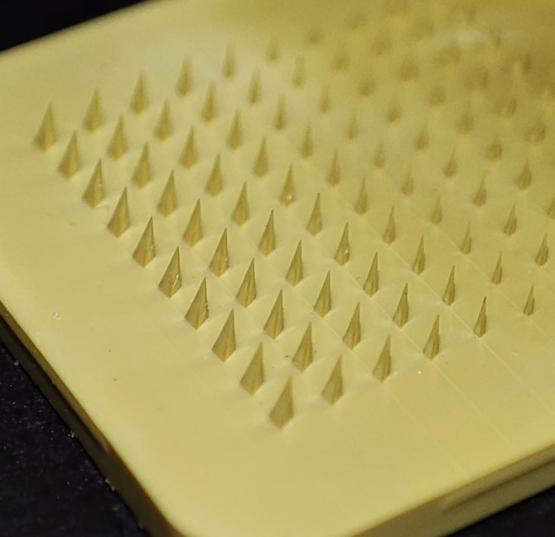
Pain-free injections will be made possible thanks to the development of microneedles designed and built by University of Bradford nanotechnology experts.
A team from the University’s Polymer Interdisciplinary Research Centre are working on a large project with funding from the Gates Foundation ‘to design a microneedle platform that delivers long-acting contraceptive drugs as a solution for family planning in low and middle-income countries.’
The successes of the project to date have meant the original grant of £5 million has been extended into 2026 to take the product to full scale clinical trials.
Ben Whiteside, Professor of Precision Manufacturing, said: “We created an array of microneedles, 100-200 tiny needles less than a millimetre in length attached to a delivery patch, which are inserted pain-free into the skin and provide controlled dispensing of a contraceptive hormone.
“The skin is a challenging environment, and to ensure that the release is consistent has been one of the landmark achievements we’ve managed this year.”
The next stage will be to take the positive results and look at scaling up production ahead of releasing the product to the marketplace, both to developing countries and western markets.
9
Better biodegradable plastics
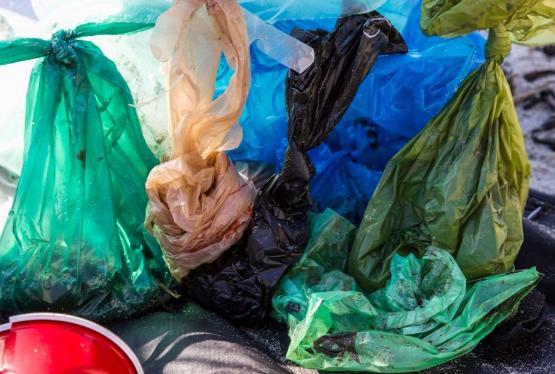
Bradford researchers are using chemistry and polymer expertise to develop polyurethanes that will degrade much quicker than current products by using fungi and bacteria in soil.
Polyurethanes are a versatile plastic used in many applications, including foam for sponges, insulation and upholstery, flexible straps, and hard plastics used as components in consumer and industrial products. Due to this diversity, plus the use of additives in lots of applications, polyurethanes can be very difficult to reprocess and recycle, but this innovation is looking to harness the natural environment to create a more sustainable product.
Stephen Rimmer, Professor of Chemistry, explains the use of fungi: “The unique research here is looking at the biology behind this, the types of fungi and bacteria that exist which are the most important microorganisms in the environment for degradation. Surprisingly little is known about these fungi - only around 20% are identifiable - so we’re investigating them by extracting DNA from soil samples, looking at genetic information of the thousands of different species present to identify which are most effective in the degradation process.”
8
Underwater landscapes
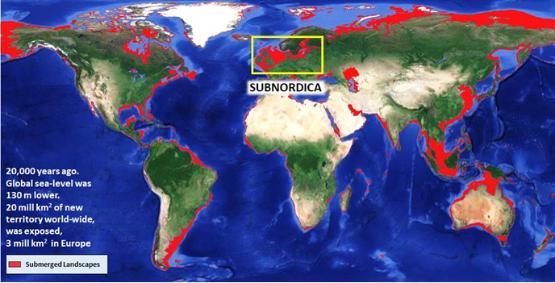
What did the world look like during the last ice age? Well, for one thing, sea levels were 400m lower than they are today, which means in many places much of the continental shelf was exposed and inhabited.
The Submerged Landscapes Research Centre received a £7 million grant from the European Research Council for its ambitious SUBNORDICA collaborative project to map the seabed in the Baltic and North Seas and to look for signs of human habitation.
Professor Vince Gaffney, Director of the Centre, said: “ The work we’re doing is becoming increasingly important, and urgent – many areas in the North Sea marked for development align with submerged ancient landscapes that we’re seeking to map and explore, so we’re in discussions with Historic England and industrial partners about creating exclusion zones.
“Elsewhere, we’re working off the American coast with indigenous groups who have territorial claims; the Life on the Edge expedition in the Adriatic and North Sea revealed the remains of an astonishing network of streams, rivers and other geological features off the Croation coast; plus we’ve got projects in China and Japan in the early stages.”
The team will also soon be releasing a downloadable tool that will allow users to explore the impact of rising sea levels on the North Sea. Created as part of the Unpath’d Waters project, the interactive digital map of Doggerland (a once-inhabited area of the North Sea, now totally submerged) will show how the hills, river valleys and human settlements of the region looked thousands of years ago.
7
Tracking cancer cells
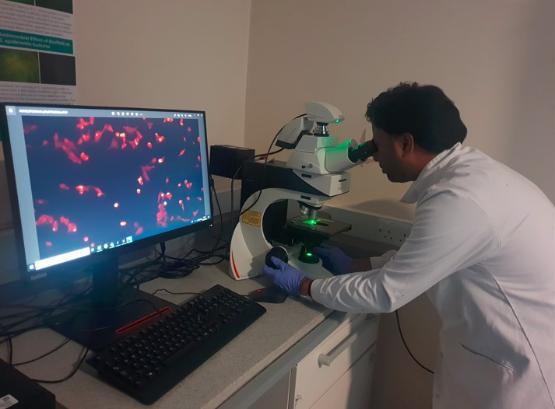
Dr Karthic Swaminathan, Lecturer in the Centre for Skin Sciences, has secured £125,000 to conduct ground-breaking cancer research from the Academy of Medical Sciences, who provide funding to support biomedical scientists to launch their research careers. The money will pay for equipment, lab space and time to better understand the spread of malignant melanomas, a dangerous form of skin cancer.
Part of Dr Swaminathan’s research will involve ‘tagging’ cancer cells with fluorescent particles and watching them as they spread, with a view to developing new treatments.
Dr Swaminathan said: “ My research involves a specific type of skin cancer, but one which is quite common. In the majority of cancer cases the problem occurs once the cancer moves away from its primary site. It is then that we lose track of the cancer. This metastasis accounts for over 90 per cent of cancer-related deaths. We want to find out how this shift occurs and why.”
The Institute of Cancer Therapeutics (ICT) is a specialist facility that includes the expertise of medicinal chemists, pharmacologists, biologists and other researchers who are all working towards treatments for cancer in a variety of forms, as this selection of stories from the last year demonstrates.
6
City of Culture

Bradford 2025 UK City of Culture is just three weeks away and the University of Bradford is already making a huge contribution.
Karina Croucher, Professor of Archaeology, Heritage and Wellbeing, is the University’s Academic Lead for City of Culture research activities.
She said: “One of the crucial aspects of our approach to Bradford 2025 is to use culture to support and inform economic development. We also want to show how the arts and humanities can work alongside science, technology, engineering and maths – which the University of Bradford is already well-known for – to tackle societal challenges.
“Harnessing our world-leading academic expertise, research and innovation, we aim to create a legacy – one which includes arts, humanities and cultures – that will benefit the city and our communities for years to come.”
Projects include using the university’s robot dog (nicknamed BD25) to take part in the Stories from Valley Parade project, which is creating a virtual 3D twin of the football ground.
In September, the university will lead an archaeological dig in Lister Park, at the site of the famous Somali Village that was part of the great exhibition of1904.
‘Pictures of Health' uses creative imagery to help give a better understanding of the human body and health conditions.
‘Culture, Identity and the Anthropocene’ is a series of interactive creative workshops with Theatre in the Mill, based on campus.
Dr Mark Goodall explains how our research contributes to the culture of Bradford: “As an integral part of the history of Bradford, the University has unique skills that it can bring to the City of Culture - we dig deep to find things that are forgotten and create engaging stories, activities and events that everyone can enjoy.”
5
Alopecia treatment
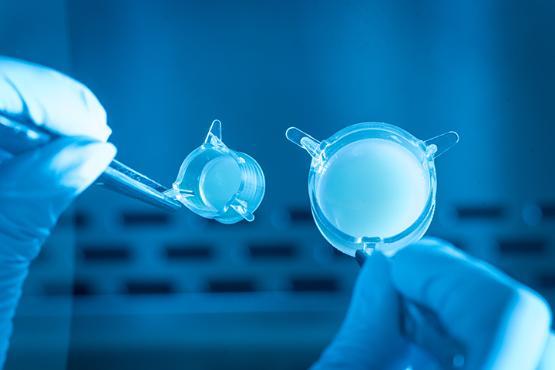
Researchers at the Centre for Skin Sciences (CSS) are involved in a range of projects investigating possible treatments for alopecia areata, a form of auto-immune hair loss that will affect around two per cent of people at some point during their lifetime.
As part of this, the CSS is working closely with industrial partners to provide scientific insights, such as its successful collaboration with Soterios Pharma, a UK-based life sciences company who develop medicines for skin diseases.
They recently released positive clinical trial results for a new drug called STS-01, seen as a potential approved therapy treatment for mild or moderate alopecia areata.
Bradford’s research team, led by Dr David Ansell, Assistant Professor in Life Sciences, is testing blood samples collected from the participants of the clinical trial, taken before and after six months of treatment.
He said: “ We’re in a really strong position at the moment - companies are seeking us out because we’re one of the few places doing this work, and we have access to unique samples and resources that mean we’re at the forefront of research in this area.”
These collaborations are part of the CSS’s ongoing strong relationship with industry partners that includes companies such as Aveda, BASF and Johnson & Johnson, who utilise the centre’s unique range of knowledge in skin and hair conditions to help create new products and resources.
4
Suntan without the sun

Swedish biotech company Coegin Pharma entered into an exclusive agreement with the University of Bradford to complete product development and commercialise a groundbreaking patented process that boosts the natural ‘tanning’ pigment in skin.
Developed in the Centre for Skin Sciences (CSS), the new technology represents an alternative to chemical-based stains or exposure to UV radiation as it works with the body’s own melanocytes to give a tanned appearance. The first cosmetics range of products is expected some time in 2026.
3
Active kids

Research at the University into children’s health and wellbeing, particularly in the Bradford region, has shown significant progress in the last year.
In June 2024, around 300 delegates from 24 countries attended the first international Whole-School Physical Activity (WSPA) conference, hosted by the University of Bradford.
A key message throughout the conference was the importance of schools as the vehicle to change deep-rooted inequalities that lead to lower life expectancies and poorer health outcomes in later life for many children. This is the basis for the Creating Active Schools (CAS) programme, a framework that supports schools in putting physical activity at the heart of school life, led by Andy Daly-Smith, Professor in Physical Activity and Child Health and the Yorkshire Sport Foundation. Themodel has already been adopted by more than 50 schools in Bradford and 200 across the UK.
2
Using AI for better cataract surgical outcomes
A Knowledge Transfer Partnership (KTP) between the University’s Visual Computing experts and ophthalmology company CustomLensAi has produced an AI-based tool that will allow surgeons to assess potential complications in cataract surgeries and work with patients to set precise expectations of the results.
Professor Rami Qahwaji said: “For CustomLensAi, the brief was to create an intelligent computer system for surgeons that can predict and improve the visual outcomes of cataract surgery. The challenge is that there is a lot of variability on how the surgery can be done which can affect the outcome, and lots of different data formats from the various equipment manufacturers.
“Our role is to provide AI-based tools that can help to improve the quality of the data and extract useful information, and build an application which will work at any eye clinic across the world.”
The KTP is now entering its third and final year, where the product will be refined and released.
Milind Pande, the Founder and CEO of CustomLensAi said: “At CustomLensAi, our collaboration with the University of Bradford is a game-changer in personalised healthcare. Together, we’re pioneering AI-driven solutions that enhance surgical precision and patient outcomes, transforming the future of ophthalmology.”
1
Datacentric engineering

A group of global companies turned to the University to deliver an innovative training programme for engineers across the world that uses datacentric engineering - using data science, mathematical modelling and AI to improve processes.
Known as the SAFI Consortium, the partnership is made up of Airbus, Stellantis (which includes Citroën, Fiat, Vauxhall and Peugeot), Renault Group and Valeo (an automotive supplier specialising in safety and green technology), with the University of Bradford.
The collaboration started in 2017 when these companies were seeking to enhance the skills of their engineers and improve the reliability, safety and environmental sustainability of large automotive and aerospace systems.
The successful delivery of the programme led to a contract extension for three years until 2027. Valeo have engaged the University as a partner on a large research project, which funds two doctoral researchers, with a further PhD student on the Industrial Partnership Route based at Valeo in Germany.
Plans for 2025 include the launch of SAFI operations in India to train the engineers at the Renault and Valeo technical centres in Chennai.
